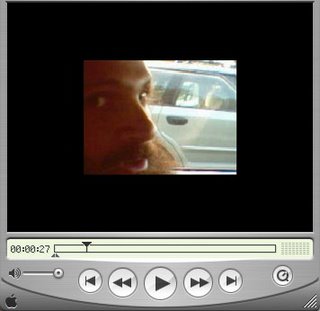Mystery Mountain, Part One
 Day Six
Day Six“In ignorance/ a certain knowledge.” There are places on the highway that I think everybody has an intimate knowledge of, yet knows nothing about. They are those little inconsistencies or changes that mark time or space in an otherwise monotonous forward motion, curves of road that suddenly say “closer” or “farther” or “amidst,” if only to you. For me, maybe for you too, it is the place on route 78 where the highway starts to be walled with tan concrete (sound baffles for bedroom communities?) and promises the approach of New York; there’s the barn that is painted “Vote Republican” where the highway makes a sharp turn taking you that much closer to Chicago on the way from Milwaukee. You might also remember that moment in John Barth’s classic deconstruction of forward motion, “Lost in the Funhouse,” where the boys look for the electrical towers and the standpipe on the way to “Ocean City.” For Kyle Lapidus, it is a hill in Paterson that has this kind of insignificant-significance. He has only ever seen it from the highway but, in his estimation, it is the most important hill or mountain of any he has experienced . . . or rather, despite never having experienced it. We take a closer look. Who needs Pedro? In two parts.
Labels: drift adventure, driving, Garret Mountain, John Barth, Kyle Lapidus, video, vidster



